Introduction
Rain gardens are a great way to beautify your outdoor spaces while also helping the environment. They act like mini-ecosystems, providing habitats for birds, butterflies and other wildlife while simultaneously trapping and reusing water that would otherwise go to waste. Rain gardens also help conserve water by reducing runoff from hard surfaces like driveways and sidewalks, preventing it from entering storm drains and polluting local waterways.
By following a few simple steps, you can create your own rain garden and start enjoying the benefits of this sustainable landscaping solution. Read on to learn more about rain gardens, including what they are, how they work, and some great design ideas!
What Is A Rain Garden?
A rain garden is a planted depression that captures and filters runoff from impervious urban areas like roofs, driveways, walkways, and compacted lawn areas. The concept of the rain garden is to slow down the water flow so it can soak into the ground rather than run off into storm sewers or waterways. Rain gardens are designed to capture rainwater runoff, filter it naturally, and reduce the amount of pollution that reaches our waterways. [1]
How To Build A Rain Garden?
Choose A Site
When planning a rain garden, the first step is to choose a suitable location. It should be an area that can capture rainfall but not one that will cause flooding or erosion when it rains heavily. The site should also have enough space for the size of garden you want to create, and it should have direct access to a water source such as a storm drain or underground aquifer. [1]
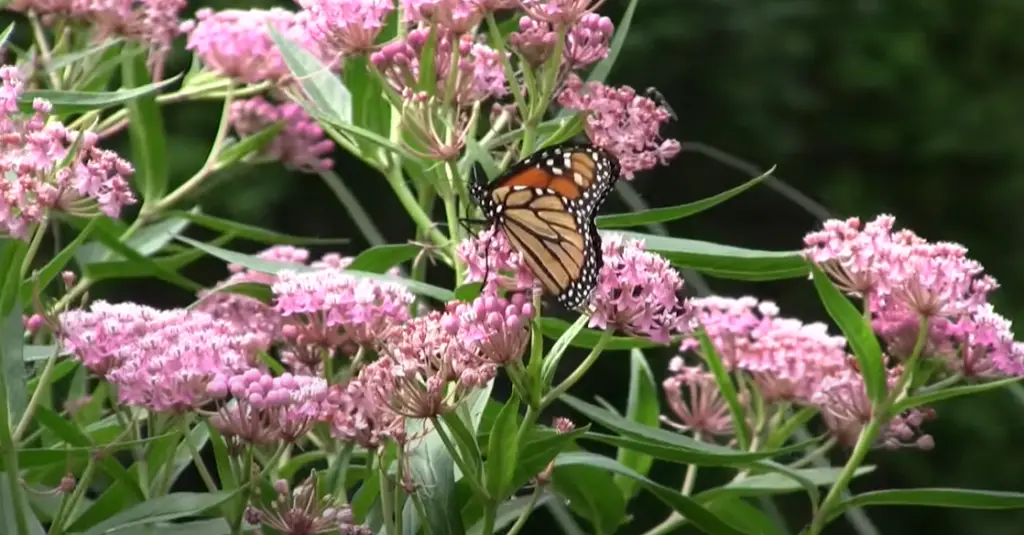
Prepare The Site.
Once you’ve chosen the site, you’ll need to prepare it for the rain garden. This involves removing any existing vegetation and making sure the soil is level. You’ll also want to create a shallow bowl shape in the area where water will collect. Once this is done, spread a layer of mulch or gravel over the soil to help retain moisture and create a suitable environment for plants. [1]
Dig Your Garden.
Now it’s time to start digging the garden. Make sure your garden is deep enough so water will not escape too quickly, as this could cause flooding and erosion in nearby areas. You can also add a layer of sand or soil to help retain moisture and create better drainage for the plants. [1]
Select Plants
When selecting plants for your rain garden, look for those that are native to the area and thrive in wet conditions. You’ll also want to consider the size of the plants so they fit within the space you have available. Plants with shallow roots will work best as they can absorb water quickly and make efficient use of any rainfall that enters the garden.Maintain Your Garden
Once your rain garden is installed, it’s important to maintain it properly. Check for signs of waterlogging and add more mulch or gravel if necessary. Also, monitor the health of your plants and remove any dead or diseased foliage as soon as possible. This will help keep your rain garden looking its best and will ensure it continues to capture rainfall efficiently. [1]
Install.
Installing a rain garden can be a simple yet rewarding process. Depending on the size and complexity of your garden, it typically takes one or two days to complete. Here are some tips for getting started:
- Choose a location that is in full sun and close to existing drainage points such as downspouts or sidewalks.
- Make sure the soil is well draining by testing it with a shovel or core aerator.
- Till the soil to make sure it’s loose and easy to work with.
- Measure out the desired size of your garden and mark off the area with stakes, string, or paint.
- Create a 3-6 inch depression in the area to help with water drainage.
- Plant native, hardy plants and grasses that can withstand heavy rainfall.
- Install a rain barrel or cistern for collecting excess runoff from your roof to use for irrigation.
- Construct swales if necessary to divert water away from the garden.
- Add mulch around plants to help retain moisture and prevent weeds from growing.
- Consider using porous pavers or gravel for pathways that allow water to percolate into the ground instead of running off. [1]
Maintain.
Keeping your rain garden healthy and functioning optimally requires regular maintenance. To ensure this, you should:
- Mulch & Weed – Mulching helps to conserve soil moisture, reduce weeds and keep the soil cool. Use mulch such as bark chips or straw over the whole area of the rain garden. Regularly check for and remove any weeds that may sprout.
- Fertilize – Fertilizing your rain garden will boost the growth of plants and limit weed growth. Use slow release fertilizer, such as compost tea or organic granular fertilizers specifically designed for rain gardens.
- Prune & Deadhead – Pruning is essential to maintaining healthy plant growth and encouraging plants to rebloom. Deadheading spent blooms will also help promote new blooms.
- Check for blockages – If your rain garden is not draining properly, you may need to check for blockages in the drain pipes or outfall channels. Remove any debris that could be causing a problem. [1]
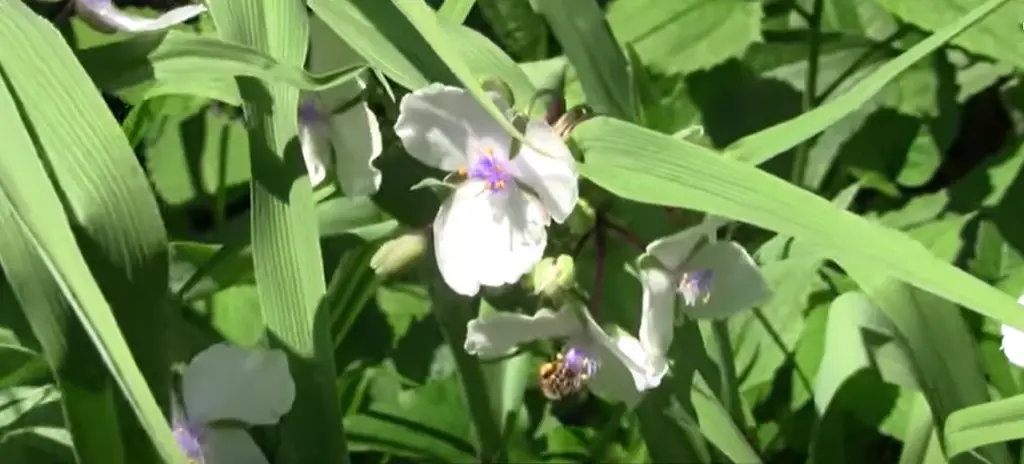
Rain Garden Design Tips
Make It Part Of The Landscape.
When planning and designing your rain garden, it’s important to make sure that your design fits in with the rest of the landscape. A well-designed rain garden will look like any other part of natural landscape, so try to incorporate plants that are native to the area and provide plenty of visual interest. If you have a smaller area or a specific style of garden in mind, there are many drought tolerant plants that are well adapted to most rain gardens. [1]
Choose A Shape
When planning a rain garden, it’s important to choose a shape that will work well with the rest of the landscape and fit in with the overall design. Rain gardens can be round, oval, rectangular, or any other shape or pattern you like. You may also want to consider your local climate when selecting plants and a shape that work best for your particular needs. [1]
Consider Style.
When designing your rain garden, take into account the overall style of your landscape. Rain gardens can fit in with any type of existing design, from traditional to modern, so it’s important to choose plants and a design that works best for you. Also think about whether you want to use low-maintenance perennials or ornamental annuals, or if you prefer a wilder look. [1]
Integrate With Other Gardens.
Rain gardens are a great addition to any other garden, as they provide an additional layer of beauty and interest. Consider integrating rain gardens with existing flower beds or vegetable gardens, or even incorporating them into a larger design that incorporates both water and plant features. Integrating rain gardens with existing landscaping can help create a more cohesive look for your landscape. [1]
Create Repetition.
When designing a rain garden, it’s important to create repetition in the design. This can be achieved through the use of similar plants, shapes and patterns. Repeating elements will help tie together different parts of your rain garden and create an overall sense of cohesion and balance. Additionally, repeating elements can create a feeling of depth and make your garden seem larger than it is. [1]
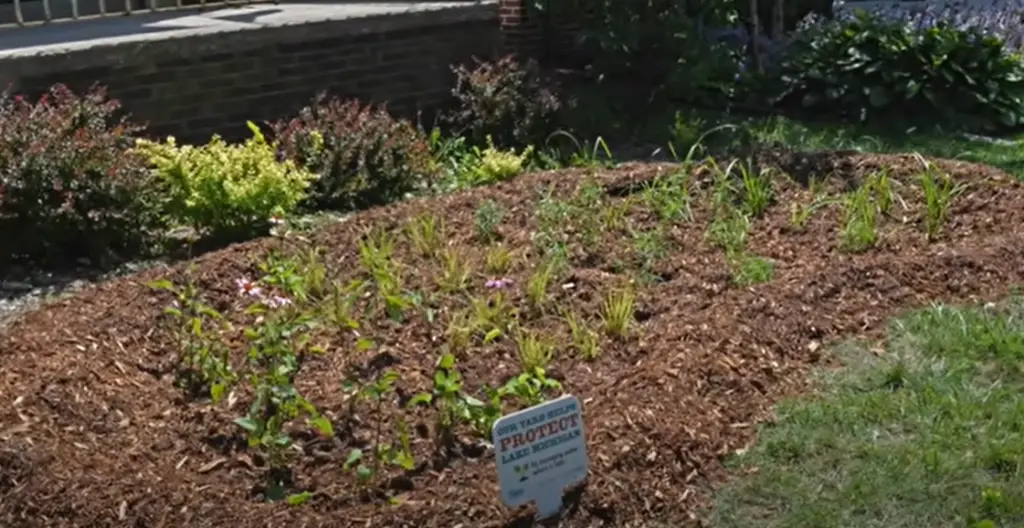
Consider Aesthetics And Function.
When designing your rain garden, it’s important to consider both aesthetics and function. Think about how the design of your garden will look from all angles, as well as the overall purpose of your rain garden. Rain gardens can be used to manage stormwater runoff, beautify a landscape, or simply provide a tranquil space for relaxation. It’s important to consider both aspects of your rain garden design in order to get the most out of it. [1]
Rain Garden Plants
Orange Coneflower
This native wildflower is a great choice for adding color and texture to your rain garden. It blooms in mid-summer with bright orange daisy-like flowers, which attract butterflies and beneficial pollinators. Orange Coneflower prefers moist soil but can tolerate some drought conditions. This makes it a great addition to areas that may not get regular water. [1]
Switchgrass
Switchgrass is a great choice for adding movement and texture to your rain garden. This ornamental grass has tall green blades that sway in the breeze, creating an eye-catching display. Switchgrass does best in full sun and moist soil with good drainage. It can be adapted to wetter or drier conditions, making it a versatile addition to your garden. [1]
Obedient Plant
Obedient Plant is an excellent choice for adding color and texture to your rain garden. This native wildflower blooms from mid-summer to early fall in shades of pink, white, and purple. The flowers have a unique shape that allows them to “obediently” stay in whatever position you place them in. Obedient Plant prefers moist to wet soil and can tolerate some drought conditions. This makes it a great addition to areas that may not get regular water. [1]
Wild Bergamot
Wild Bergamot is a great choice for adding color and texture to your rain garden. This native wildflower blooms in mid-summer with fragrant white or pink flowers that attract butterflies and beneficial pollinators. Wild Bergamot prefers moist to wet soil, but can be adapted to drier conditions. It’s a versatile addition to your garden. [1]
Common Winterberry
Common Winterberry is a great choice for adding color and texture to your rain garden. This native shrub blooms in mid-spring with white flowers that turn into bright red berries in the fall. Common Winterberry prefers moist soil, but can tolerate some drought conditions. This makes it a great addition to areas that may not get regular water. [1]
Cardinal Flower
Cardinal Flower is an excellent choice for adding color and texture to your rain garden. This native wildflower blooms in mid-summer with bright red flowers that attract butterflies and beneficial pollinators. Cardinal Flower prefers moist soil, but can tolerate some drought conditions. This makes it a great addition to areas that may not get regular water. [1]
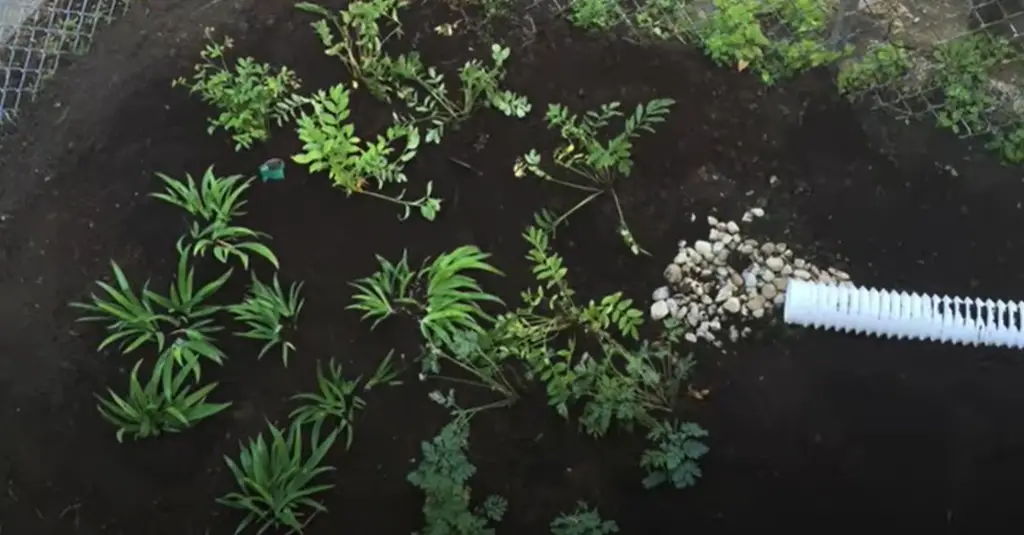
Goldenrod
Goldenrod is a great choice for adding color and texture to your rain garden. This native wildflower blooms in mid-summer with bright yellow flowers that attract butterflies and beneficial pollinators. Goldenrod prefers moist soil but can tolerate some drought conditions. This makes it a great addition to areas that may not get regular water. [1]
FAQ
What is the best plant for a rain garden?
The best plants for a rain garden depend on the specific climate and conditions of the area your garden is located in. Generally, native plants are recommended as they are already adapted to your region and will require less maintenance than exotic species. You should consider perennials such as daylilies, hostas, sedges, ferns, black-eyed susans, and other plants that are tolerant of wet conditions. Additionally, fast-growing shrubs and trees such as willows or dogwoods can help absorb excess rainwater.
Where is the best place to put a rain garden?
The ideal location for a rain garden is in an area of your property that receives runoff. Examples include low spots, near downspouts or gutters, or at the base of a slope. Avoid locations that are prone to standing water or flooding, as this can cause root rot in plants and create other drainage issues.
What is a rainwater garden?
A rainwater garden is a shallow depression filled with native plants and mulch that is designed to capture, absorb, and filter stormwater runoff from roofs, driveways, patios, walkways, and other impervious surfaces. Rainwater gardens are an effective way of managing stormwater on your property while providing habitat for beneficial wildlife. Additionally, rainwater gardens can help reduce local flooding and improve water quality by filtering out pollutants before they reach the watershed.
What is a Florida rain garden?
A Florida rain garden is a type of landscape design that was developed specifically for the state’s humid subtropical climate. These gardens can be used to capture, absorb, and filter stormwater runoff from roofs, driveways, patios, walkways, and other impervious surfaces. Florida rain gardens should be planted with native plants that are adapted to the region’s climate, such as sedges and ferns. Additionally, fast-growing shrubs and trees such as willows or dogwoods can help absorb excess rainwater.
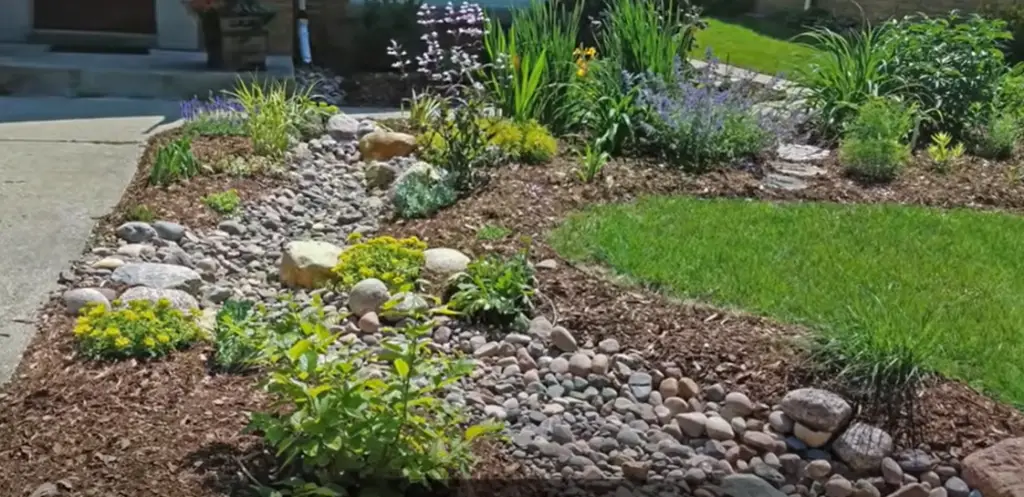
What are the 3 facts about rain gardens?
- Rain gardens are an effective way of managing stormwater on your property while providing habitat for beneficial wildlife.
- Rain gardens can help reduce local flooding and improve water quality by filtering out pollutants before they reach the watershed.
- Planting native plants that are adapted to the region’s climate is essential for a successful rain garden. Additionally, fast-growing shrubs and trees such as willows or dogwoods can help absorb excess rainwater.
What are the 3 benefits of rain gardens?
- Rain gardens reduce the amount of stormwater runoff that reaches rivers, lakes, and other water sources.
- Rain gardens help to filter pollutants from stormwater runoff before it reaches waterways.
- Rain gardens provide habitat for beneficial wildlife such as butterflies, birds, frogs, and other animals. Additionally, rain gardens can help reduce flooding in your local area.
- Rain gardens also provide a visually appealing addition to any landscape, as they are often filled with colorful native plants.
Do rain gardens attract mosquitoes?
No, rain gardens do not attract mosquitoes. In fact, they can help reduce the number of mosquito larvae in your area, as they filter out pollutants and provide habitat for predators that feed on mosquito larvae. Additionally, making sure you do not let water pool in your rain garden will further reduce any potential breeding sites for mosquitoes.
What are the drawbacks of a rain garden?
One potential drawback of a rain garden is the maintenance required to keep it functioning properly. This includes weeding, pruning, and replacing plants as necessary. Additionally, if your rain garden is not planted with native plants adapted to your region’s climate, it may require more water and fertilizer than other types of gardens. Finally, rain gardens should not be placed in areas that are prone to standing water or flooding, as this can cause root rot in plants and create other drainage issues.
What are the cons of a rain garden?
The main con of a rain garden is the maintenance required to keep it functioning properly. This includes weeding, pruning, and replacing plants as necessary. Additionally, if your rain garden is not planted with native plants adapted to your region’s climate, it may require more water and fertilizer than other types of gardens. Finally, rain gardens should not be placed in areas that are prone to standing water or flooding, as this can cause root rot in plants and create other drainage issues. It is also important to note that although rain gardens help reduce local flooding, they are not a solution for large-scale flooding events.
Useful Video: Basics of Rain Gardens with Eco-Landscaping Expert Sean James
Conclusion
Now that you know the basics of rain garden ideas, it’s time to get creative and start planning your own. Rain gardens are an excellent way to add beauty and curb runoff from heavy rains. With a little bit of research and preparation, you can create a beautiful addition to your home or business that will also help conserve water and reduce flooding in your area.
Remember to consider the size of the rain garden, choose plants that will thrive in wet conditions, and add soil amendments to ensure proper drainage. Plan ahead for maintenance and make sure to use native plants whenever possible. With a little bit of creativity and some basic knowledge, you can have an attractive rain garden that will look great year-round and provide many benefits. Good luck!
References:
- https://www.gardendesign.com/eco-friendly/rain-gardens.html










Leave a Reply
View Comments